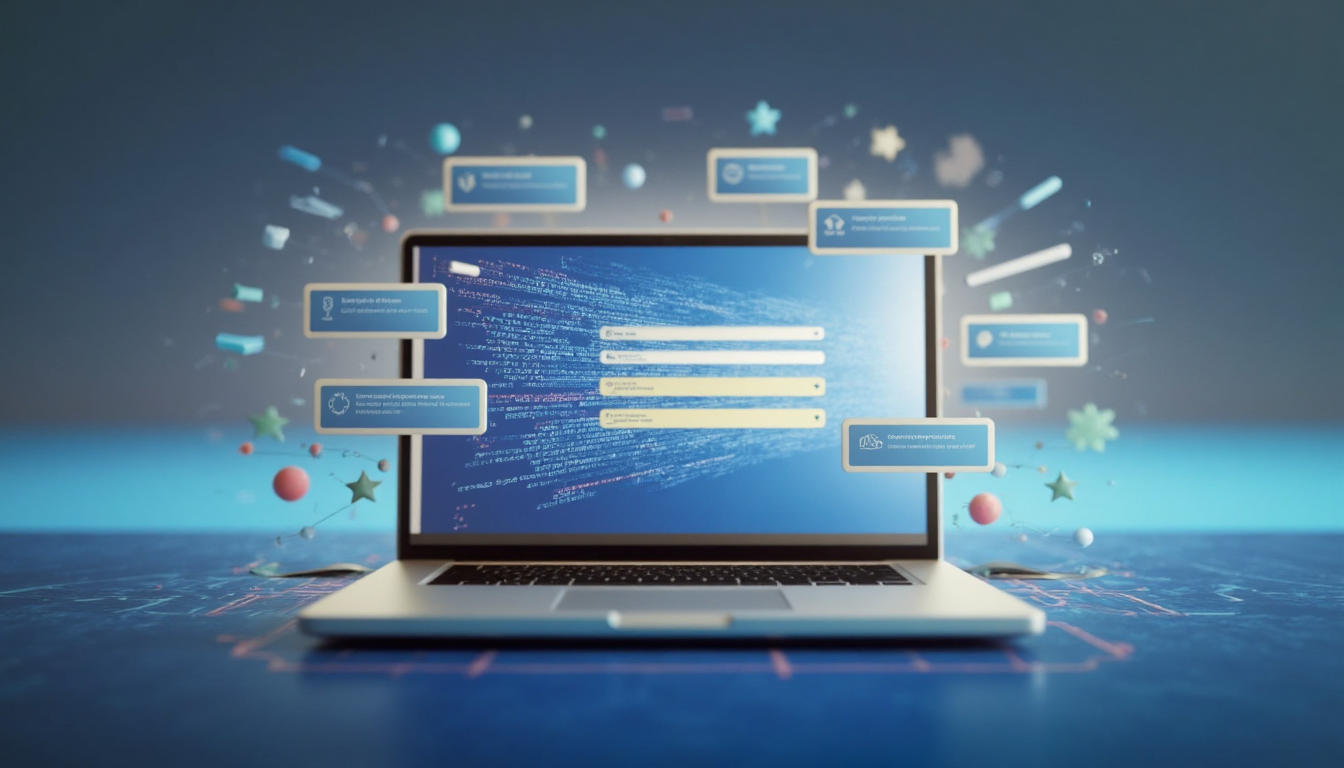Compliance Requires Threat Modeling Your Current Process Can’t Deliver

I’m sure you’ve already heard of Biden’s Executive Order on cybersecurity. If you’re leading security or product at an enterprise, it’s not optional anymore: secure-by-design, SBOMs, and continuous threat analysis are now table stakes.
So why are so many organizations still behind?
Because most threat modeling today is manual, inconsistent, and impossible to scale. Teams are buried in Jira tickets, relying on a few security champions to keep the lights on. There’s no visibility, no traceability, and no way to prove you’re actually meeting the expectations.
Secure-by-design only works if threat modeling is continuous and integrated into the SDLC. But for most enterprises, it’s still treated like a static document or a once-per-release task. It’s inefficient and a compliance risk.
Table of Contents
- The Problem: Manual Threat Modeling Can’t Scale to Meet Compliance Demands
- How AI Delivers Speed, Consistency, and Coverage
- What Enterprise Security Leaders Need to Do to Stay Compliant and Secure
- AI-Powered Threat Modeling is Non-Negotiable
The Problem: Manual Threat Modeling Can’t Scale to Meet Compliance Demands
Most enterprises are trying to meet modern security expectations using threat modeling practices that haven’t changed in over a decade. Can you see the problem there? Security leaders are being asked to deliver continuous assurance, prove secure by design, and show evidence across multiple frameworks while still relying on manual processes that simply don’t scale.
Manual threat modeling depends on a few experts and inconsistent outputs
Threat modeling today is still a manual process handled by a small group of security engineers. These are skilled people, but they’re overloaded and spread thin. Each session requires a deep understanding of architecture, attack surfaces, and threat scenarios. So you either wait for the right expert to become available, or you skip the process entirely.
And even when you do get a threat model completed, the output is not consistent. Some teams use diagrams, others document threats in wikis or spreadsheets, and some don’t track mitigations at all. You end up with a patchwork of threat models that can’t be audited, reused, or reliably measured. That makes it hard to show compliance, and harder to improve over time.
Compliance is moving faster than your security reviews can keep up
The new compliance reality expects continuous visibility into threats across the SDLC. The Executive Order, NIST SSDF, and even industry-specific standards (like PCI DSS 4.0 or HIPAA 2023 updates) expect that threat analysis happens early and often. Not once a quarter and not at release time.
But manual modeling can’t move that fast. Most organizations still need a week just to get the right people in the room. Add another few weeks to finalize documentation, review mitigations, and make updates. That timeline doesn’t work when your dev teams are pushing weekly releases and compliance requires near real-time proof of risk analysis.
And with SBOM requirements becoming standard, threat modeling isn’t just about identifying threats but also connecting those threats to components, libraries, services, and APIs. Manual workflows don’t support that level of detail across hundreds of services.
You can’t automate security if the threat model is stuck in a document
Modern security programs rely on integration, automation, and traceability. Threat modeling is supposed to drive requirements, guide testing, and inform runtime protection. But if your threat model lives in a PowerPoint or is buried in a Confluence page, none of that happens.
You can’t enforce security controls, measure coverage, or tie threats to CI/CD workflows if the model isn’t structured, queryable, and integrated into your toolchain.
The gap between manual modeling and continuous security is the reason most organizations are falling short despite investing in tools, people, and processes. And as the regulatory pressure grows, that gap becomes a risk.
How AI Delivers Speed, Consistency, and Coverage
The core issue with traditional threat modeling is that it’s manual, inconsistent, and doesn’t keep up with modern development speed or compliance pressure. And you know that already.
But AI-driven threat modeling doesn’t require security teams to stop everything and run workshops. It takes in architectural data, like system diagrams, service descriptions, and workflows, and automatically identifies potential threats, attack vectors, and trust boundaries. What used to take days or weeks now takes seconds.
Let’s get specific.
AI maps out threats using system patterns and known attack vectors
AI models are trained on thousands of real-world threat scenarios, system architectures, and known vulnerabilities. When you give the system a high-level architecture, whether that’s an uploaded diagram, cloud environment, or YAML/JSON system definition, it parses the structure and identifies:
- Data flows and trust boundaries
- Public-facing and internal services
- Authentication and authorization gaps
- Known misconfigurations or risk-prone patterns
It’s not at all guessing but matching patterns against threat intelligence and secure design principles. You get a threat model that’s complete, contextual, and directly mapped to your architecture.
You get instant analysis, consistent output, and compliance-ready documentation
Every model the AI generates follows the same logic and structure. That means your entire org gets standardized outputs, whether the system was modeled by an engineer in HQ or a dev team offshore. You eliminate inconsistencies, and you eliminate the bottleneck of waiting for experts to step in.
The output is formatted to support audits and compliance checks. The threats and mitigations are automatically mapped to frameworks like:
- NIST 800-53
- ISO 27001
- CIS Controls
- OWASP ASVS
- CISA Secure-by-Design principles
That gives you traceability across controls, systems, and time. You can show which threats were identified, how they were mitigated, and how the system evolved, all without manual effort.
AI-based threat modeling works at the speed of your dev teams
When your developers ship code weekly or even daily, security can’t be weeks behind. AI lets you run threat models as often as needed, at every architecture review, during major changes, or continuously across pipelines. That keeps your threat modeling aligned with how your business moves.
You’re not limited to just meeting compliance expectations. You can also start building a security program that scales. With AI, threat modeling stops being the problem and starts becoming a continuous and integrated part of how you build and ship software.
What Enterprise Security Leaders Need to Do to Stay Compliant and Secure
As a security leader, you don’t have the luxury of waiting. The regulatory requirements are active, and the pace of development isn’t slowing down. If you want to stay compliant and secure, threat modeling has to be operationalized NOW. That means automating it, scaling it across teams, and embedding it directly into how software gets built and shipped.
Here’s where to start.
Make threat modeling part of your DevSecOps pipeline
You can’t keep threat modeling as a separate process outside of engineering. To scale, it needs to be part of your SDLC. That means integrating with CI/CD and infrastructure-as-code pipelines. When a new service is spun up, when code is merged, or when infrastructure changes, the threat model should update automatically.
That’s what shift-left means in practice: threat identification starts before code is written, and it continues throughout the lifecycle. You’re not running threat models quarterly. You’re doing it continuously, aligned with how teams build.
Look for solutions that integrate with:
- Git-based workflows (GitHub, GitLab, Bitbucket)
- CI/CD platforms (Jenkins, CircleCI, Azure DevOps, GitHub Actions)
- Cloud-native environments (Kubernetes, Terraform, AWS CloudFormation)
This eliminates lag and allows threat modeling to scale with development, not slow it down.
Use AI to make threat modeling consistent and repeatable across teams
Every team has different systems, languages, and tech stacks. But the threats aren’t completely unique. The problem is that threat modeling today varies widely in quality depending on who’s doing it. With AI, you can close that gap.
By using AI to analyze system architecture and automatically generate threat models, you standardize outputs regardless of the team, region, or skill set involved. No more relying on tribal knowledge. No more security teams redoing work because the first model didn’t go deep enough.
You get consistent threat coverage, across every team, at every layer: network, app, API, identity, and data. And because the AI uses real attack data and secure design principles, it scales with complexity without sacrificing depth.
Build audit readiness into the process
NIST 800-53, ISO 27001, PCI DSS 4.0, and others now expect proactive threat identification, traceability, and proof that mitigations are applied.
When your threat modeling is automated and integrated, you don’t need to scramble to prepare for an audit. The system keeps a record of:
- What threats were found
- When they were found
- Who handled them
- How they were mitigated
- Which control frameworks they map to
This audit-ready posture gives you leverage with regulators, customers, and leadership without adding more overhead to your teams.
AI-Powered Threat Modeling is Non-Negotiable
Threat modeling has officially moved from a security best practice to a regulatory requirement. Executive mandates, frameworks like NIST 800-53 and ISO 27001, and customer expectations now demand proof that you’re identifying and mitigating threats early. And continuously.
Manual workflows can’t deliver that at scale. They slow teams down, create inconsistent outputs, and leave gaps in both security and compliance.
Leading enterprises are already solving this by automating threat modeling. They’re integrating it into DevSecOps pipelines, using AI to eliminate silos, and generating standardized, audit-ready outputs in real-time.
SecurityReview.ai automates threat modeling without removing the human from the process. You stay in control at every step. AI will take care of the gruntwork while your team reviews validates, and refines the model as needed.
There’s no need to build custom diagrams or prep polished documentation. Just upload what you already have (architecture notes, configs, cloud templates, service descriptions), and we’ll generate complete and accurate threat models from those inputs. It’s fast, scalable, and built for how teams actually work.
FAQ
AI Threat Modeling for Compliance at Scale
The Executive Order on Improving the Nation’s Cybersecurity highlights secure-by-design principles, continuous threat analysis, and supply chain risk management. While it doesn’t prescribe specific tooling, it aligns with NIST and CISA guidance that clearly position threat modeling as a required security activity—not a nice-to-have.
Is threat modeling now a compliance?
Yes. Frameworks like NIST 800-53, ISO 27001, PCI DSS 4.0, and CISA’s Secure-by-Design guidelines now expect proactive threat identification. You must be able to show how threats are analyzed and mitigated throughout the software development lifecycle—not just during a one-time review.
Why can’t manual threat modeling meet compliance?
Manual threat modeling is too slow, inconsistent, and dependent on a few experts. Most organizations struggle to keep up with fast-paced development and shifting compliance demands. It’s also hard to audit or standardize across large teams, which becomes a liability during assessments.
How does AI improve modeling?
AI automates pattern recognition, attack vector mapping, and architectural analysis. It processes real inputs—like system descriptions, cloud templates, and API specs—to generate complete, contextual threat models in seconds. This speeds up analysis, standardizes outputs, and scales across the org.
Do I need to create diagrams to use AI-powered threat?
No. With SecurityReview.ai, you don’t need to create or upload system diagrams. Just send us what you already have—text descriptions, architecture docs, config files, API specs, Terraform, CloudFormation, etc.—and we’ll generate accurate, actionable threat models based on that input.
Can this integrate into our CI/CD?
Yes. SecurityReview.ai supports integration into modern DevSecOps workflows—GitHub, GitLab, Bitbucket, Jenkins, GitHub Actions, and more. You can trigger threat modeling automatically based on pull requests, service deployments, or architectural changes.
How does this help with audits and reporting?
SecurityReview.ai generates threat models that are automatically mapped to compliance frameworks like NIST 800-53, ISO 27001, CIS Controls, and OWASP ASVS. Every output is audit-ready, version-controlled, and traceable—so you can show exactly what was analyzed, when, and how it was mitigated.
How is the human involved in the threat process?
AI handles the heavy lifting—threat identification, pattern matching, and mapping to controls—but the human remains in control. Your team can review, validate, and refine the outputs as needed. It’s a hybrid approach that keeps security teams involved without slowing them down.








.png)
.png)





